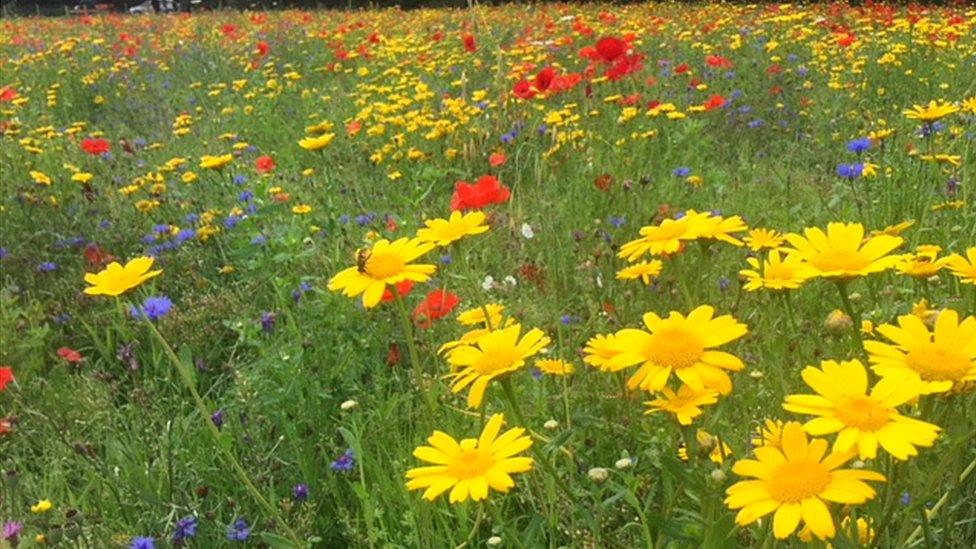Wales' climate change minister: 'Time to jump start restoration'
- Published
- comments
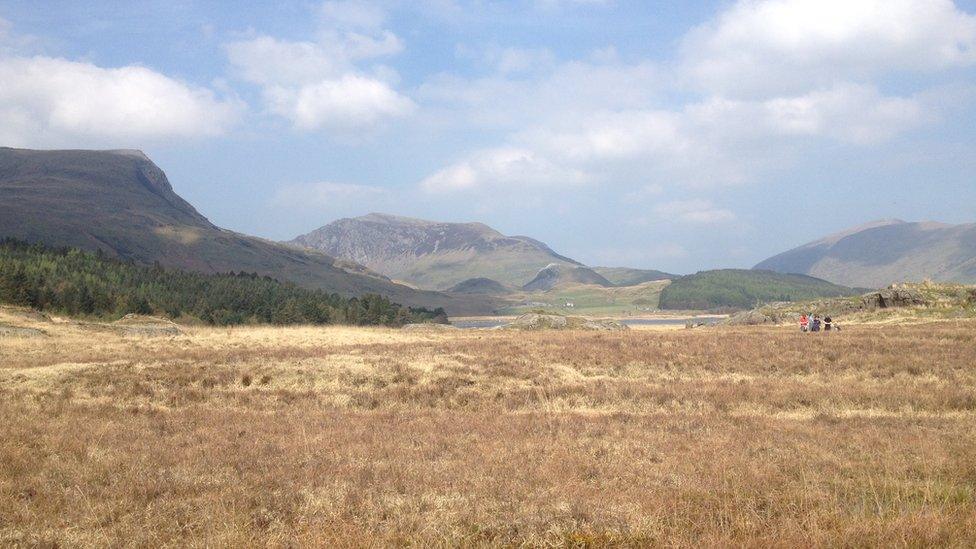
Most of Wales' peatlands are upland blanket bog
Peatland restoration targets are to be tripled in Wales in an attempt to boost biodiversity.
It follows an expert review of ways to tackle nature loss, commissioned by the Welsh government.
The panel has also called for better management of protected sites on land, and more conservation areas at sea.
Climate Change Minister Julie James has said "a decade of decisive action" was needed to "jump start the restoration of our ecosystems".
Conservation groups have warned Wales is "haemorrhaging wildlife", with a major report in 2019 suggesting one in six species could soon disappear.
These included birds like lapwings and curlews, mammals like the water vole and insects like the marsh fritillary butterfly and Snowdon leaf beetle.
Alongside climate change, biodiversity loss is considered an existential threat to humanity - think of the pollinators we rely on to help us grow food as just one example.
Ahead of a global summit on the issue in Canada in December, Welsh ministers had ordered a "deep dive" review with leading experts.
The recommendations centre around how to meet a UN goal of protecting and effectively managing 30% of land and sea for nature by 2030, something both the Welsh and UK governments have pledged to achieve.
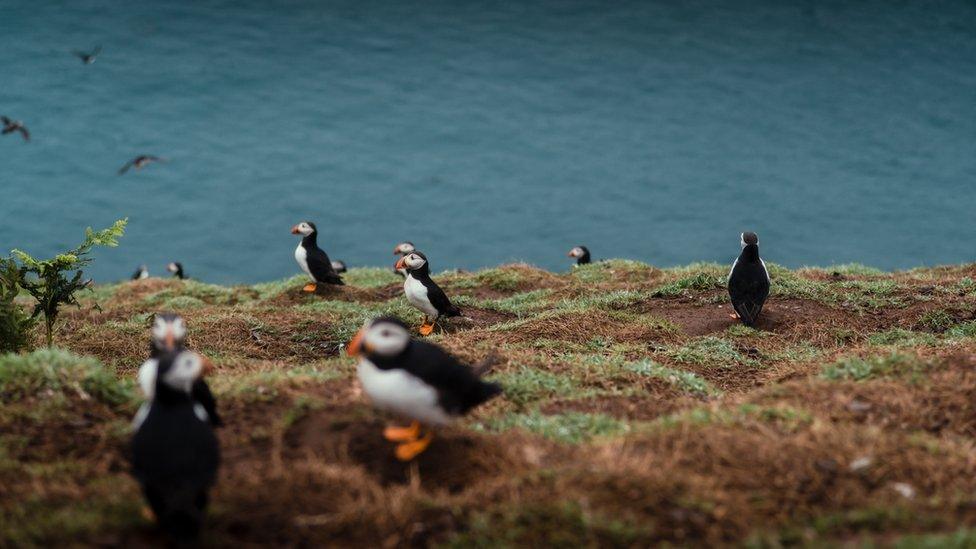
Experts want more of the sea to be given protected status
The panel has called for a "better, bigger and more effectively connected" portfolio of protected sites in Wales, with more of the sea set aside as marine protected areas too.
A network of nature recovery exemplar areas should be created, the experts have said, showcasing a range of different habitats and conservation work that could be replicated elsewhere.
They have also called for better monitoring, to measure progress towards the "30 by 30" goal.
Currently, sites of special scientific interest (SSSIs) and other areas designated to protect rare wildlife and habitats cover 10.6% of Wales.
But a recent Natural Resources Wales report revealed almost half were not being monitored due to lack of funds.
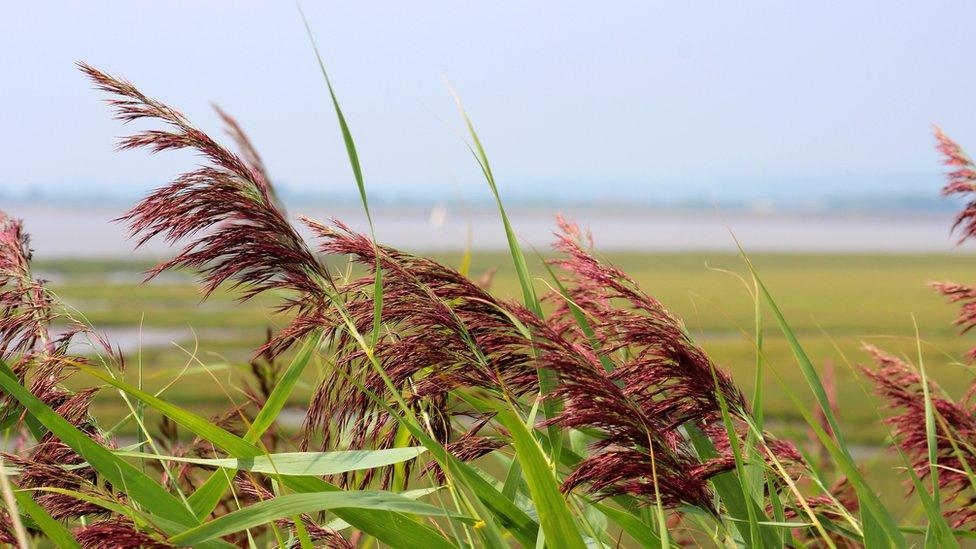
Sites of special scientific interest, like the Gwent Levels, and other areas designated to protect habitats cover 10.6% of Wales
Where information was held, about 60% of protected areas were classed as being in an unfavourable condition for wildlife.
Sharon Thompson, RSPB Cymru's head of policy and one of the biodiversity review's panel members, has said it was critical the recommendations were "urgently turned into action".
"As we approach the COP15 biodiversity summit in Montreal in December, where we want global leaders to agree to ambitious targets to restore nature, this deep dive couldn't have come at a more important time," she said.
Speaking at the report's launch at the National Botanic Gardens of Wales in Carmarthenshire, Ms James said "our health, happiness and future" depended on reversing the declines in nature.
She announced the government would set up an ongoing independent expert working group to monitor Wales' progress, and also pledged to triple peatland restoration targets.
Wales' National Peatland Action Programme, external currently aims to restore 600-800 hectares of public and private land a year between 2020 and 2025.
Peatlands support a rich variety of wildlife habitats but are also highly prized for their ability to soak in and store climate-warming carbon dioxide.
Project manager Dr Rhoswen Leonard said 90% in Wales were currently estimated to be in "poor or unfavourable condition".
"There's a lot of work to do to improve the condition of these peatlands," she said.
"We know that restoration will increase the diversity of plant, bird and mammal species that can live and thrive on these systems."
Meanwhile, back at the botanic gardens, there is hope a long-running scheme to restore wildflower meadows on one part of the estate could be seen as an exemplar of best practice.
About 97% of Wales' wildflower meadows are thought to have been lost since the 1930s, with the expansion of industrialised farming, heavy fertiliser use and early cutting of hay.
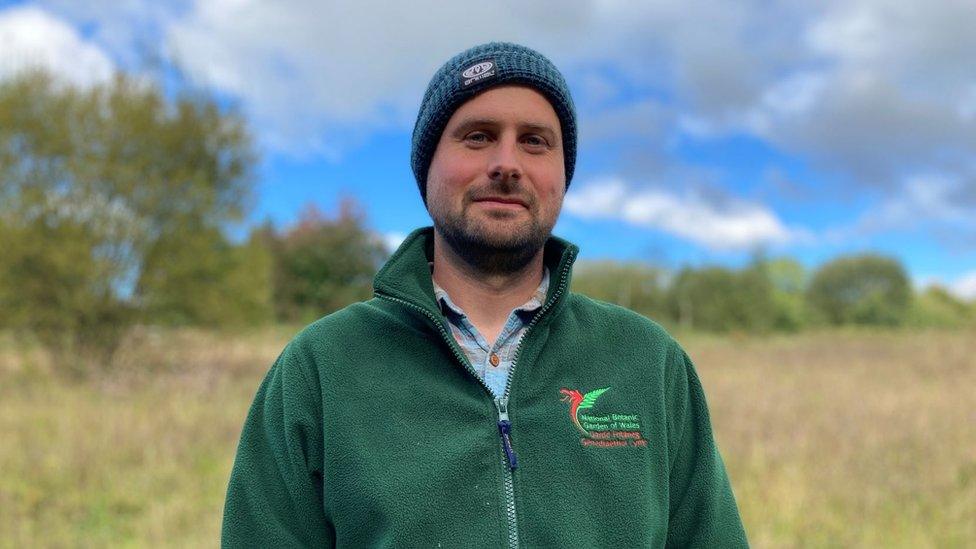
Alex Summers, curator at the National Botanic Gardens of Wales
At Cae Trawscoed, visitors can experience a traditionally managed hay meadow which is cut only once the wildflowers have had time to flower and seed, providing habitat and food for insects, birds and mammals.
Alex Summers, curator at the National Botanic Gardens of Wales, has said the fields were now "absolutely covered with high species diversity", with seeds harvested and sold to others who "want to include biodiversity within projects they're doing".
"We need to be looking towards meadows to help us sequester carbon and provide those spaces for biodiversity that are going to be key for future generations," he said.

DABBERS AT THE READY: A glimpse into Judges Bingo Hall in Tonypandy
BAFTA CYMRU NOMINEES: Celebrate the best of the BBC

- Published22 September 2021

- Published9 August 2021

- Published6 July 2019
